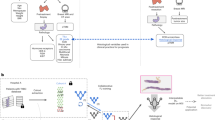Abstract
Over the last decades, deep learning-based algorithms have witnessed tremendous progress in the medical field to assist pathologists in clinical decisions and reduce their workload. For these models to reach their full potential, access to large and diverse datasets is essential, but collaborations between hospitals are highly limited by privacy-related regulations. At the same time, medical institutions do not always have specialized pathologists to diagnose biopsies and label local data. To address these limitations, federated learning gained traction to enable multi-institution model training without sharing sensitive patient data. However, this technique is still in its infancy when it comes to digital pathology applications, and does not consider institutions with unlabeled data in federations. In this paper, we introduce a novel semi-supervised federated learning approach that promotes multi-institutional training of deep learning models while integrating unlabeled collaborating data sources into the federated setup. The experimental results show a better performance for models trained under a federated setting with both labeled and unlabeled data. Optimally, this framework will also bring the promise of assisting clinical decisions in hospitals that do not have specialized pathologists.
Access this chapter
Tax calculation will be finalised at checkout
Purchases are for personal use only
Similar content being viewed by others
References
del Amor, R., et al.: An attention-based weakly supervised framework for spitzoid melanocytic lesion diagnosis in whole slide images. Artif. Intell. Med. (2021). https://doi.org/10.1016/j.artmed.2021.102197
Andreux, M., du Terrail, J.O., Beguier, C., Tramel, E.W.: Siloed federated learning for multi-centric histopathology datasets. In: Albarqouni, S., et al. (eds.) DART/DCL -2020. LNCS, vol. 12444, pp. 129–139. Springer, Cham (2020). https://doi.org/10.1007/978-3-030-60548-3_13
Barnhill, R.L.: The Spitzoid lesion: rethinking Spitz tumors, atypical variants, ‘Spitzoid melanoma’ and risk assessment. Mod. Pathol. 19(2), S21–S33 (2006). https://doi.org/10.1038/modpathol.3800519
Brisimi, T.S., Chen, R., Mela, T., Olshevsky, A., Paschalidis, I.C., Shi, W.: Federated learning of predictive models from federated electronic health records. Int. J. Med. Informatics (2018). https://doi.org/10.1016/j.ijmedinf.2018.01.007
Campanella, G., et al.: Clinical-grade computational pathology using weakly supervised deep learning on whole slide images. Nat. Med. 25(8), 1301–1309 (2019). https://doi.org/10.1038/s41591-019-0508-1
Coudray, N., et al.: Classification and mutation prediction from non-small cell lung cancer histopathology images using deep learning. Nat. Med. 24(10), 1559–1567 (2018)
Hekler, A., et al.: Pathologist-level classification of histopathological melanoma images with deep neural networks. Eur. J. Cancer (2019). https://doi.org/10.1016/j.ejca.2019.04.021
Ilse, M., Tomczak, J.M., Welling, M.: Attention-based deep multiple instance learning. In: 35th International Conference on Machine Learning, ICML 2018 (2018)
Ke, J., Shen, Y., Lu, Y.: Style normalization in histology with federated learning. In: Proceedings - International Symposium on Biomedical Imaging (2021). https://doi.org/10.1109/ISBI48211.2021.9434078
Konecný, J., McMahan, H.B., Ramage, D., Richtárik, P.: Federated optimization: distributed machine learning for on-device intelligence. arXiv:1610.02527 (2016)
Li, X., Gu, Y., Dvornek, N., Staib, L.H., Ventola, P., Duncan, J.S.: Multi-site fMRI analysis using privacy-preserving federated learning and domain adaptation: ABIDE results. Med. Image Anal. (2020). https://doi.org/10.1016/j.media.2020.101765
Lu, M.Y., et al.: Federated learning for computational pathology on gigapixel whole slide images. Med. Image Anal. (2022). https://doi.org/10.1016/j.media.2021.102298
Rieke, N., et al.: The future of digital health with federated learning. NPJ Digit. Med. 3(1), 1–7 (2020). https://doi.org/10.1038/s41746-020-00323-1
Shaw, S., Pajak, M., Lisowska, A., Tsaftaris, S.A., O’Neil, A.Q.: Teacher-student chain for efficient semi-supervised histology image classification. arXiv:2003.08797 (2020)
Shin, H.-C., et al.: Medical image synthesis for data augmentation and anonymization using generative adversarial networks. In: Gooya, A., Goksel, O., Oguz, I., Burgos, N. (eds.) SASHIMI 2018. LNCS, vol. 11037, pp. 1–11. Springer, Cham (2018). https://doi.org/10.1007/978-3-030-00536-8_1
Simonyan, K., Zisserman, A.: Very deep convolutional networks for large-scale image recognition. In: 3rd International Conference on Learning Representations, ICLR 2015 - Conference Track Proceedings (2015)
Xie, Q., Luong, M.T., Hovy, E., Le, Q.V.: Self-training with noisy student improves imagenet classification. In: Proceedings of the IEEE Computer Society Conference on Computer Vision and Pattern Recognition (2020). https://doi.org/10.1109/CVPR42600.2020.01070
Acknowledgments
This work has received funding from Horizon 2020, the European Union’s Framework Programme for Research and Innovation, under grant agreement No. 860627 (CLARIFY), the Spanish Ministry of Economy and Competitiveness through project PID2019-105142RB-C21 (AI4SKIN) and GVA through projects PROMETEO/2019/109 and INNEST/ 2021/321 (SAMUEL). The DGX A100 used for this work was donated by the Generalitat Valenciana (GVA), action co-financed by the European Union through the Operational Program of the European Regional Development Fund of the Comunitat Valenciana 2014–2020 (IDIFEDER/2020/030).
Author information
Authors and Affiliations
Corresponding author
Editor information
Editors and Affiliations
Rights and permissions
Copyright information
© 2022 The Author(s), under exclusive license to Springer Nature Switzerland AG
About this paper
Cite this paper
Launet, L. et al. (2022). Federating Unlabeled Samples: A Semi-supervised Collaborative Framework for Whole Slide Image Analysis. In: Yin, H., Camacho, D., Tino, P. (eds) Intelligent Data Engineering and Automated Learning – IDEAL 2022. IDEAL 2022. Lecture Notes in Computer Science, vol 13756. Springer, Cham. https://doi.org/10.1007/978-3-031-21753-1_7
Download citation
DOI: https://doi.org/10.1007/978-3-031-21753-1_7
Published:
Publisher Name: Springer, Cham
Print ISBN: 978-3-031-21752-4
Online ISBN: 978-3-031-21753-1
eBook Packages: Computer ScienceComputer Science (R0)




